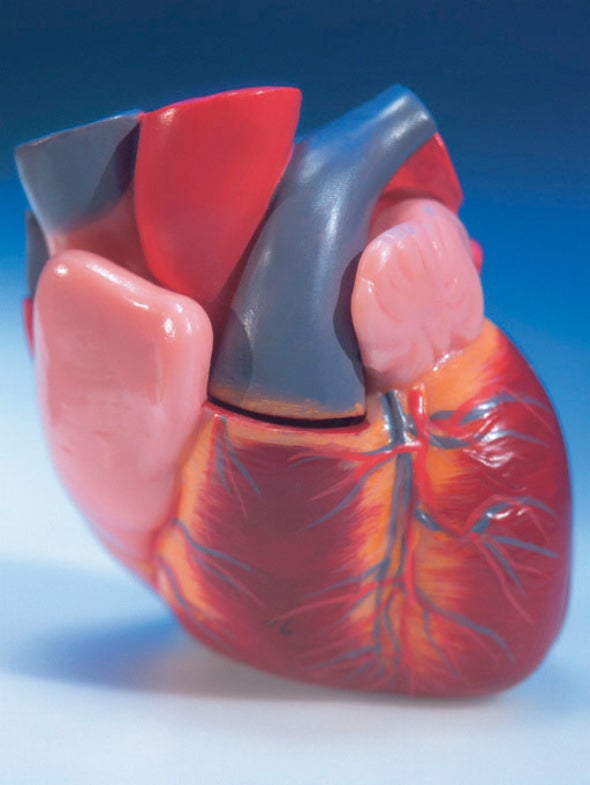This is Scientific American's 60-second Science, I'm Christopher Intagliata.
It sounds like a witches' recipe: gather the hearts of a fence lizard; a little brown bat; a naked-tailed armadillo; and dozens of others. "So initially we tried to get them from zoos... but unfortunately that didn't work out very well. We couldn't get any samples, even when the animal died, we couldn't get a heart."
Guo Huang, a developmental biologist at the University of California, San Francisco. He says they had more success obtaining specimens from the jars of natural history museums. The reason for this biological scavenger hunt? Huang and his colleagues wanted to examine the number of chromosomes contained in heart cells across the animal kingdom. Because there's a curious phenomenon in our hearts—which is that most of the human body's cells are diploid, meaning two sets of chromosomes, one from each parent. But the lion's share of our heart cells are actually polyploid, meaning two or more copies from mom, two or more copies from dad.
What Huang and his team found, looking at that collection of hearts, is that the proportion of polyploid cells in a heart goes up as you go from fish to lizards to amphibians to transitional species like platypuses, to mammals. The reason that finding might matter to us, is that recent studies in mice and zebrafish have shown that hearts with more diploid cells—like a zebrafish's—are able to regenerate and heal themselves. Hearts with more polyploid cells—like mice and humans—cannot.

So what makes a heart have more polyploid cells, and thus, less chance of regenerating? "That's actually the million-dollar question." But one answer Huang's team found, is that thyroid hormone—the same hormone that regulates metabolism and makes us warm-blooded creatures—might be to blame. Because when they added extra thyroid hormone to zebrafish's tanks, their tiny hearts were no longer able to regenerate. And, conversely, when they engineered mice to have hearts that were insensitive to thyroid hormone, the mouse hearts could regenerate back after injury.
"When we look at the heart function which is mainly measured by contract ability of the heart, we can see heart function improve over time after injury, while control mice cannot improve."
The results are in the journal Science.
As for fixing human hearts? Perhaps manipulating thyroid hormone levels could be a start. "We know regulating thyroid hormone probably alone is not sufficient to cure heart disease, at least for promoting heart regeneration completely. If we can figure out other major regulators of this process, we might be in a better shape."
Thanks for listening for Scientific American — 60-Second Science. I'm Christopher Intagliata.











